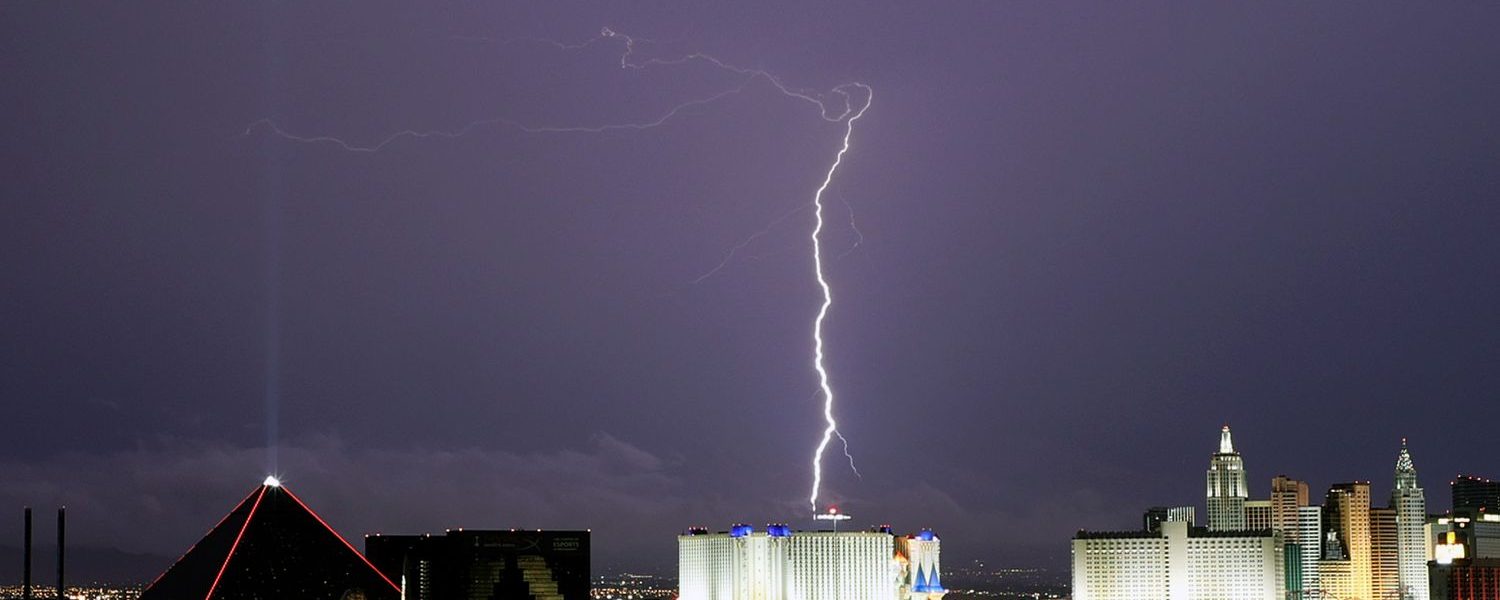Lightning is the discharge of electricity caused by an imbalance between the positive and negative charges that build up in a thundercloud. Most lightning flashes occur between or within clouds, but about 40 million lightning strikes hit the ground in the United States each year, according to the Centers for Disease Control and Prevention, which tracks lightning strike injuries and deaths.
Is it possible to harness that energy to power entire communities? Here, we explore that question.
Amount of Energy in Lightning
Lightning produces 10 times more electricity than flows on high-tension wires.
It also produces heat energy hotter than the surface of the sun, and sound energy (thunder) that can travel 25 miles.
While only lasting a millisecond, a flash of lightning is thought produce up to 10 gigawatts (GW) of electricity, which would be a sixth of the capacity of all the rooftop solar panels in the U.S. in 2021. Capturing that energy, however, is not an easy task.
Did You Know?
A single bolt of lightning can contain up to a billion volts and about 100,000 or more amps of electricity.
Can We Harvest Lightning Energy?
Lightning carries or produces three forms of energy: electricity, heat, and sound. In recent years, scientists have explored the questions:
- What if we could store that electricity to charge all the electric vehicles soon to dominate our roads?
- Or capture its intense heat to produce enough steam to run a turbine?
- Or convert enough of the sound to generate the electricity needed to produce carbon-free hydrogen fuel?
Capturing Electricity
Various attempts have been made using high-voltage switching circuits and magnetic capacitors to capture and store lightning energy. Several patents both pending and active describe systems that could turn lightning into electricity. Still, though, none of these systems are being used—at least widely.
As one study puts it, “this is not a complex scientific undertaking, like fusion reactors or nuclear facilities.” Indeed, Benjamin Franklin got us halfway there with the invention of lightning rods, which attract and capture lightning and direct it into the ground. The other half—taming it—is the hard part.
Earth acts as an electrical ground because it’s large enough to absorb an unlimited amount of electrical current with minimal effect.
The challenge comes in stepping down the energy carried in a lightning bolt to safe levels.
The electricity grid already works this way: High-tension transmission lines coming from power plants carry electricity at 345,000 volts, but through multiple substations, the electricity is stepped down to regional levels and then to neighborhood levels, until power lines into residences carry a mere 120 volts.
Yet stepping a lightning bolt down from millions of—up to a billion—volts to a safer level is a more monumental task, one yet to be achieved.
Harvesting Heat
According to the National Oceanic and Atmospheric Administration, the energy from lightning heats the air briefly to around 50,000 degrees Fahrenheit—hotter than the surface of the sun.
Recent advances in capturing heat and turning it into electricity may suggest a way to harvest lightning’s mega-heat. While magnets (central to most electricity generation) lose their magnetic force when they are heated, recent research has identified that tiny particles called paramagnons act as semiconductors, capable of turning heat into electricity.
Getting from that basic research to a workable product may happen first with more down-to-earth sources of heat, such as the waste heat from manufacturing processes or vehicles. Applying it to lightning is a less urgent task.
Converting Sound
Anyone who owns a phone knows it’s possible to convert electricity into sound waves. The reverse is possible as well, and experiments are underway across the world in harvesting sound for electricity.
The extreme heat produced by lightning causes the air around it to explode, producing the sound waves we call thunder. Within a few hundred feet of its source, thunder can produce around 120 decibels. Existing sources of sound energy from traffic and urban noise pollution, however, are all-too-reliable nuisances to merit experiments with harvesting thunder.
Outlook on Harvesting Electricity
With electricity, supply must always meet demand—otherwise, the system breaks down and blackouts occur. One of the challenges of harvesting lightning’s energy, as with other renewables, is its intermittency.
The intermittency of lightning is far less predictable both in time and location than wind or solar energy. Storing lightning’s electricity is the most difficult part, not only because the energy storage industry is still in its infancy, but because the storage devices themselves will need to withstand a massive single bolt of electricity without damaging the device.
Political will (and thus research dollars) is focused on the more-established technologies of renewable energy: water, wind, and solar. For the time being, harvesting lightning will remain the pursuit of individual inventors with dreams of being the next Benjamin Franklin.



